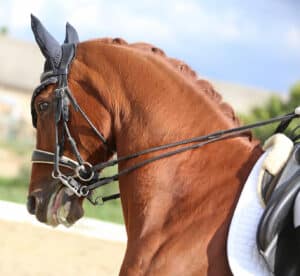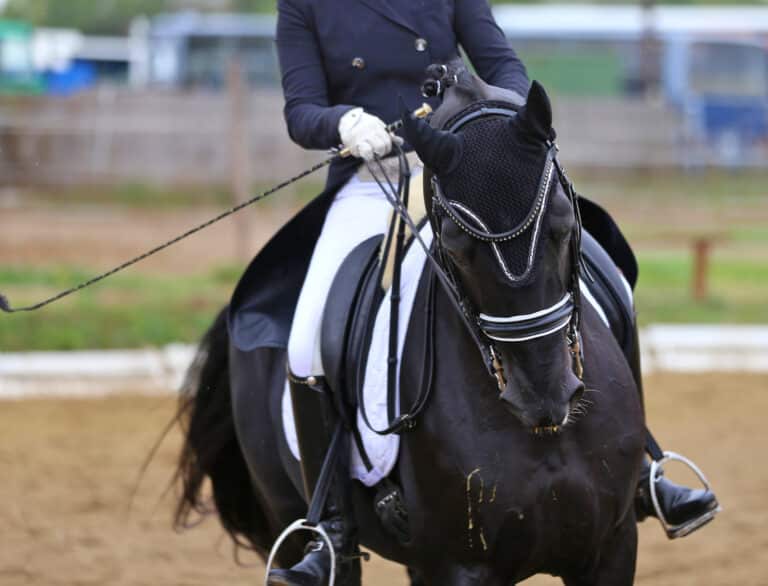There’s An Elephant In The Room
Social licence to operate: What is it? What do we need to know? And as equestrians, do we even have reason to be interested? AMANDA MAC investigates.
Social licence is a strange animal. It’s the elephant in the room that despite its ever-increasing size, seems all too easy to ignore and a little too difficult to define. But difficult or not, as equestrians we should be aware of its implications for our sport, and understand how it might apply to us both as individuals and collectively.
To give it its full title, ‘social licence to operate’ is a phrase thought to have been coined in 1996, when the then President of the American Forest and Paper Association was talking about the American paper industry’s pro-active environmental policies. If their environmental achievements were independently verified, he argued, then the public would give the industry their trust, and embedded within that trust was what he termed a ‘social licence to operate’.
Since then, social licence has gained plenty of attention. However, when all is said and done, it exists as a concept only: academics are still debating what it means, it’s not legislated for, and it’s not a topic you regularly hear discussed. However, broadly speaking it refers to a society’s willingness to accept the way in which any organisation conducts business – and when it comes to sports that include animals, that willingness has much to do with public perceptions around the wellbeing of those animals and the way in which they’re being treated.
At this point you may be thinking, well, obviously this applies to the racing industry – and yes, it does, and the industry is well aware of that fact.
In 2020, Racing Australia appointed Karen Day (previously in a similar role at Racing NSW) as the organisation’s first National Equine Welfare and Traceability Executive. In a recent Equestrian Hub Podcast, Karen commented that in her opinion, social licence could be seen as a negotiation tool with the community: “… when you’re improving things you’re giving communities that might not necessarily understand your industry, the chance to engage with you … communities that perhaps think that we don’t necessarily deserve social licence.”
If you take into account the ‘Nup to the Cup’ anti-Melbourne Cup social media campaigns, and the responses given to a survey on the Cup (some loved the event, some didn’t, others wanted changes: “I won’t be watching until the whips are banned or severely curtailed”), ongoing community negotiation is clearly important. And having put in place a number of proactive programs designed to transition retired racehorses into secure and fruitful new careers, the Australian racing industry now has some positive news to bring to the negotiation table.
But can public opinion also influence other equestrian sports?
Referring to the outlawing of whips in endurance sport, Dr Peter Kerkenezov BM, a veterinary surgeon of many years standing, pointed out some time ago that: “Public perception and pressure and welfare organisations have forced some change over the years, but there is still a long way to go.”

Fast forward a few years to the very legitimate public outrage (which fuelled headlines such as ‘The Olympics Are Anything But Games to Abused Horses’) that erupted after the assault on a horse during the Tokyo Olympics pentathlon. Following the infamous Pentathlon Punch, as it became known, the sport’s international governing body voted to remove horse riding from the event. There were also reports at the time that the International Olympic Committee was being sued by an animal welfare organisation in relation to the incident.
And there’s more. In an opinion piece written for the influential Horse & Hound magazine and blog, Adam Cromarty, an equestrian commentator, broadcaster and British Show Jumping/FEI judge explained why he thinks social licence has significant implications for equestrian sport: “I believe within 10 years, whips and spurs will no longer exist in competition. There’s no point in giving an opinion on whether I believe this to be a positive thing. In fact, I believe the views of those within our sport will be inconsequential. Social licence is the biggest challenge we have ever faced.”
To be clear, Adam wasn’t basing his opinions on vague assumptions, he was referring to the results of an independent survey conducted by YouGov, a professional polling firm headquartered in the UK. The survey was commissioned by the international charity World Horse Welfare, which for some time has been monitoring the equestrian world’s social licence to use horses in sport, and the shifting public attitudes in that space. Released in May this year, the survey showed that despite high-profile initiatives in the equestrian world, public perception of horses in sport hadn’t appreciably changed since the previous year’s survey: 20% of respondents did not support the continued involvement of horses in sport under any circumstances, while 40% would only support their involvement if welfare was improved. Now, that’s not to say that those opinions were educated (and we’ll take a closer look at what that might mean below), but it’s public opinion nonetheless.
In our Sept/Oct 2020 issue, we featured an article by Roly Owers, World Horse Welfare’s Chief Executive, in which he defined social licence to operate as the public perception that an industry is operating in a socially acceptable or legitimate way, adding that “to do this within the horse sport industry, it must do right by its horses – and be seen to be doing this by always putting the health and welfare of the horse first.”
To say he’s an expert on the subject is an understatement. Roly, who was recently awarded an OBE for services to equine welfare, is an advisor to the FEI, the International Horse Sports Confederation, and the British Horseracing Authority on matters relating to horse wellbeing.

As keynote speaker at a recent World Horse Welfare hosted event for equestrian leaders and the media, Roly commented that in relation to equine welfare and social licence, equestrian sport was heading in the right direction, but turning negative perceptions around will “… take time and it is vital to be brave and proactive and to challenge the status quo. The horse world is taking fundamental steps down the path to ensure all horses in sport are able to live a good life, and we need to take our colleagues, fellow equestrians, and the general public with us when we show how horses can thrive in equestrianism.”
Two of the event’s main takeaways were that: a) there’s an urgent need to find new ways in which horse welfare in horse sport can be further improved; and b)
the equestrian world needs to be more proactive in spreading the word about the existing exemplary levels of horse care.
And that brings us back to the idea of an ‘educated opinion’. If social licence to operate hinges on the public’s perception that we’re doing the right thing by our horses, we need to consider the way in which we’re being perceived. It’s understandable that to someone outside the sport, whips, bits, spurs, nosebands and other assorted pieces of equipment may appear cruel. And let’s be honest here, their effect may very well be painful for the horse if in the wrong hands or used incorrectly – but that doesn’t apply to the majority of equestrians. To add fuel to the fire, the media (mainstream and social) tends to gravitate towards bad news because it sells and makes for great clickbait. The end result is that unfortunately, the close bond between many horses and their owners, the loving care that most riders lavish on their equine companions, and the time and money spent on improving our skills and knowledge usually don’t rate a mention. Is it surprising then, that a largely uninformed general public have such a dim view of equestrian sport? To quote Adam Cromarity, it’s time for us to be proactive to protect our sport – and that includes always, and in all ways, making the health and welfare of our horses our number one priority.
So, is social licence a thing? Yes, it is. Does it have the potential to impact equestrian sports? Yes, it does. Should we be concerned? Well, we most definitely shouldn’t be ignoring the elephant in the room!
Which poses another question: what can be done to help improve and maintain the general public’s trust, and in the process ensure that the social licence to operate our sport is not withdrawn? In part, the answer may well lie in the Five Domains Model, a scientifically based benchmark for assessing animal welfare – and in our October issue, we’ll be taking a closer look at the Five Domains, what they are, and what they might mean for us and our horses.

This article was proudly sponsored by Iconoclast Equine Australia.

Helping your horse put their best foot forward in The Ultimate Equine Support Boots.



